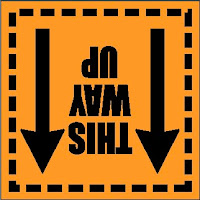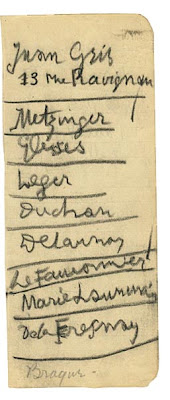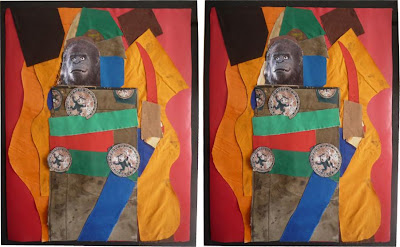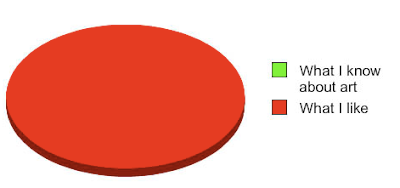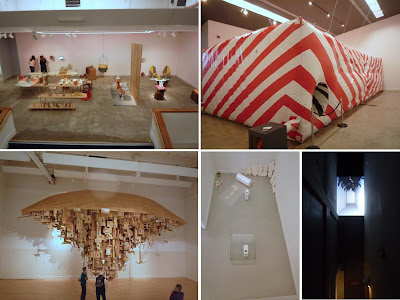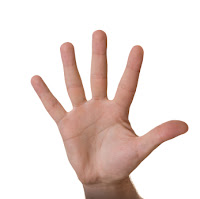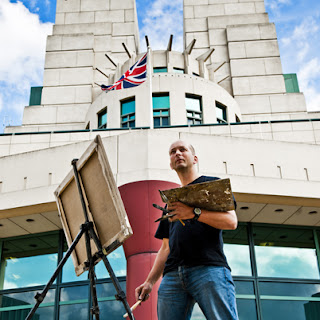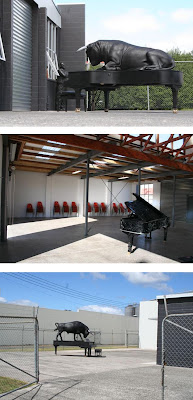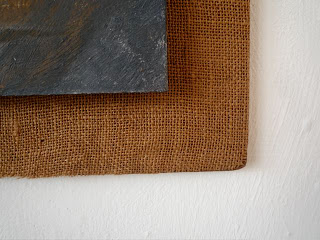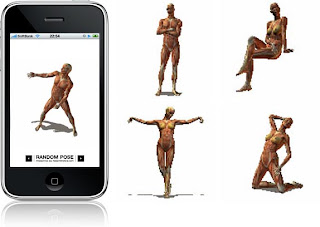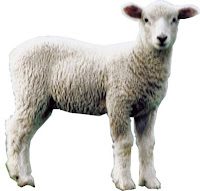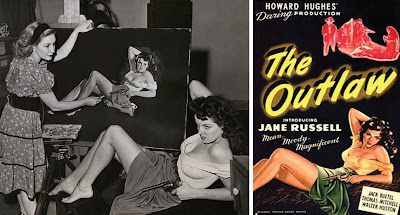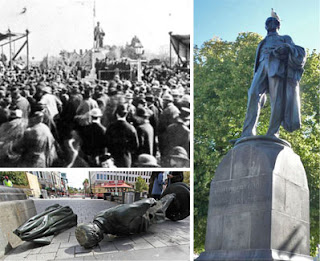Thursday, March 31, 2011
Put one on before they get one off
Posted by
jim and Mary
at
11:37 AM
![]()
![]()
Labels: public sculpture
Priceless
In his seven and a bit minutes of TV fame, de P trades off about three minutes of Colbert insulting the art in his upcoming auction at Phillips de Pury for four minutes of Colbert insulting him. You can watch it here if you want to and get to hear C tell de P that he’s gay, the art is gay, his Swiss accent makes him sound drunk, the catalogue text is pretentious and that art is crap. Phillips de Pury sold the Colbert portrait for $26,000.
Image: Colbert puts in the boot as Simon de Pury smiles through gritted teeth
Wednesday, March 30, 2011
The Hood
Tuesday, March 29, 2011
Style section
The death of the curator
Posted by
jim and Mary
at
6:57 AM
![]()
![]()
Labels: auckland art gallery, curators, Te papa
Monday, March 28, 2011
When in Rome
Owning a car that can manoeuvrer round a statue, you know you need one.
Posted by
jim and Mary
at
11:59 AM
![]()
![]()
Labels: art in adland
By the numbers: international edition
Saturday, March 26, 2011
Friday, March 25, 2011
The name game
Thursday, March 24, 2011
True lies
Wednesday, March 23, 2011
Pie in the eye
Found: Cheryll Sotheran
Posted by
jim and Mary
at
6:55 AM
![]()
![]()
Labels: peryer, photography
Tuesday, March 22, 2011
Auction fever
Art to go
Thanks for the spot B
Posted by
jim and Mary
at
6:36 AM
![]()
![]()
Labels: architecture, fake, mccahon
Monday, March 21, 2011
Facing up
Posted by
jim and Mary
at
11:57 AM
![]()
![]()
Labels: cnz venice
Team work
Posted by
jim and Mary
at
6:59 AM
![]()
![]()
Labels: artist studio
Saturday, March 19, 2011
Friday, March 18, 2011
First the good news
Posted by
jim and Mary
at
6:59 AM
![]()
![]()
Labels: CNZ, exhibitions, govett-brewster
Thursday, March 17, 2011
Moorish
Posted by
jim and Mary
at
6:54 AM
![]()
![]()
Labels: apple, public sculpture
Wednesday, March 16, 2011
Five things to do tomorrow
Posted by
jim and Mary
at
6:59 AM
![]()
![]()
Labels: CNZ, min of art, min of culture
Tuesday, March 15, 2011
The woman in bronze
“Earth to OTN,” writes reader K, “you posted on a bronze statue of a woman a couple of years ago.” Oh right, thanks. Other readers have mentioned Queen Vic’s statue in Wellington. Nice. And there’s Pania and that one standing beside the pointing Kupe too. OK, that’s enough.
Posted by
jim and Mary
at
11:54 AM
![]()
![]()
Labels: public sculpture
Killing you would be too easy Mr Dyke
Monday, March 14, 2011
Put on
Heavy metal
This is where the sculptures were seen for the first time over the last few days, and it is also where Parekowhai has his studio. Giving On first looking into Chapman’s Homer its first airing in Henderson was a generous gesture by Parekowhai; on previous occasions works destined for Venice have been shown here only after they have played the Italian gig.
The installation was laid out to reflect as far as possible the way it will be seen in Venice. A Henderson side street stood in for the Grand Canal and the carved piano was guarded at each entrance by the two bronze bulls on their piano plinths.
Over the weekend the sound of the carved piano being played indoors, was often accompanied by locals burning rubber up and down the road outside. The same locals also stopped at the fence to stare and take pics on their mobile phones shooting them off to friends with ‘OMG just cn this bull ona pno so gr8’.
Posted by
jim and Mary
at
6:52 AM
![]()
![]()
Labels: parekowhai, sculpture, venice biennale
Friday, March 11, 2011
Stuckists
Thursday, March 10, 2011
Putting the flop into flip-flop
Sacking Colin McCahon
Wednesday, March 09, 2011
Close call
Go figure
Tuesday, March 08, 2011
DIY
Posted by
jim and Mary
at
11:59 AM
![]()
![]()
Labels: Christchurch quake
The silence of the lambs
Monday, March 07, 2011
Rocking result
Posted by
jim and Mary
at
5:00 PM
![]()
![]()
Labels: Christchurch quake
Ring of confidence
Posted by
jim and Mary
at
11:59 AM
![]()
![]()
Labels: art museum, photographers at play
Sculpture for nobs
Posted by
jim and Mary
at
6:59 AM
![]()
![]()
Labels: public sculpture, venice biennale
Saturday, March 05, 2011
Yo mouse
Friday, March 04, 2011
Art and the movies
Posted by
jim and Mary
at
6:59 AM
![]()
![]()
Labels: art in the movies
Thursday, March 03, 2011
Today’s question
Posted by
jim and Mary
at
11:59 AM
![]()
![]()
Labels: controversy, public sculpture
Rocked
Posted by
jim and Mary
at
6:59 AM
![]()
![]()
Labels: Christchurch quake, public sculpture, scape
Wednesday, March 02, 2011
Time Lord
Unfortunately the plinth, constructed in Christchurch, turned out to be too small and had to be rejigged. The statue was eventually put in place but a further delay of nine months meant it remained shrouded until 6 August 1867, six years after commissioning.
Posted by
jim and Mary
at
6:57 AM
![]()
![]()
Labels: Christchurch quake, public sculpture
Tuesday, March 01, 2011
The name game
Posted by
jim and Mary
at
11:52 AM
![]()
![]()
Labels: art education, name game





